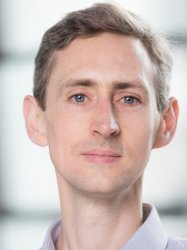Overview
My research interests are centred on the application of photonics and ultrafast laser technology to fluorescence-based biomedical imaging. This work can be divided into three main directions: clinical applications, higher speed/throughput/content imaging and higher spatial resolution imaging.
In terms of clinical applications of fluorescence imaging, I am exploring the potential of endogenous tissue autofluorescence for determining tissue metabolic status, diagnosing disease and for determining the margins of diseased tissue. The first challenge is to develop instruments that are capable of measuring and imaging tissue autofluorescence in a clinical setting, spanning bulk ‘point-probe’ measurements, wide-field imaging of the tissue surface (including via endoscopes), through to depth-resolved sub-cellular imaging. The second challenge is to understand the molecular origins of the fluorescence signal observed and how this correlates to different types and states of healthy and diseased tissue.
For fluorescence-based imaging of cultured cells in the biosciences, there is an increasing need to develop methods that provide quantitative measurements of processes occurring within and between cells. In addition, there is the need to make such measurements at ever higher speeds, both in order to follow dynamic events and to be able to perform high content/throughput imaging of 100’s of cells automatically in order to obtain results that are statistically significant. To address these needs, I have developed a novel light-sheet fluorescence microscopy technique called oblique plane microscopy (OPM) that permits real-time imaging of biological specimens in three dimensions. This technique is being applied to the study of dynamic events in samples ranging from isolated heart muscle cells to whole hearts in zebrafish embryos. It is also being applied increasingly to higher-throughput studies of arrays of samples in 96 and 384-well plates. In addition, together with colleagues in the Photonics Group, I am developing automated fluorescence lifetime imaging microscope (FLIM) systems capable of imaging well plates for reading out protein-protein interactions via Förster resonance energy transfer (FRET).
In order to push to fluorescence imaging to ever smaller length scales, I am also working with colleagues in the Photonics Group to develop super-resolution microscopy techniques. This includes the development of a stimulated emission depletion (STED) microscope with the ability to correct for sample- and instrument-induced aberrations and parallelised STED microscopy to increase the image acquisitoin speed. We are also developing lower-cost microscope hardware for single-molecule localisation microscopy (SMLM).
Working with colleagues in the Department of Bioengineering at Imperial and Bioengineering at King’s College London, we have translated the concepts used for optical sub-diffraction imaging to achieve super-resolution ultrasound imaging with standard clinical ultrasound contrast agents. This includes super-resolution ultrasound imaging in phantoms, preclinical models and humans. Using phase-change nanodroplets contrast agents, we have also demonstrated super-resolution ultrasound imaging without the need for the contrast agent to be flowing through the sample.

